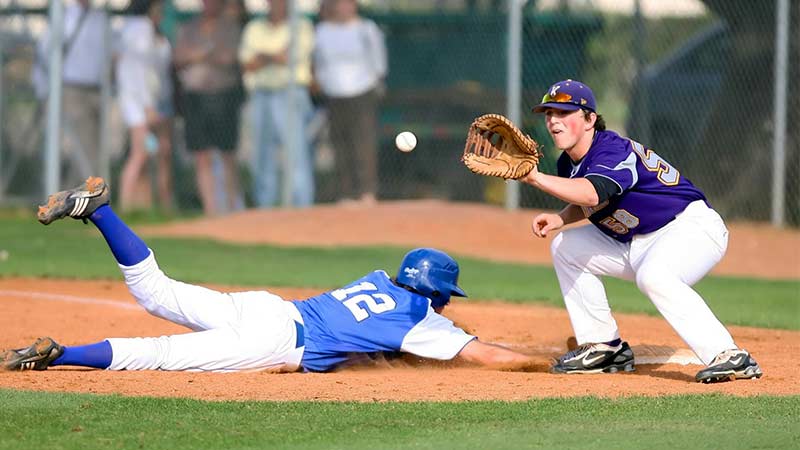In baseball, the concept of timeouts isn’t as straightforward as in other sports, but mastering these pauses can dramatically influence the game’s flow. Unlike sports with clear-cut timeout structures, baseball’s regulations are more fluid, offering strategic opportunities that savvy players and coaches can exploit.
When you step onto the mound for a quick chat with your pitcher, you’re essentially calling a timeout without the formal announcement. These moments are crucial for giving players a breather, breaking an opponent’s concentration, or discussing key tactics.
Understanding the nuanced rules around these informal timeouts can provide your team with a significant edge.
Pitchers, too, can control the game’s rhythm using the Pitch Clock. While they have a set time to deliver a pitch, smart pitchers manipulate this to their advantage within the regulations.
Knowing when and how to use these pauses effectively can turn the tide in your favor, making you a master of timing and strategy.
Overview of Baseball Timeout Rules
In baseball, timeouts are essential for various reasons, including strategy discussions, player injuries, and equipment adjustments. Here’s an overview of the timeout rules in baseball:
Purpose of Timeouts in Baseball
Timeouts in baseball allow players and coaches to strategize and adjust during the game. Unlike other sports that have structured timeout periods, baseball’s timeouts are more fluid and situational.
They can help reset the pace, provide tactical advice, and address specific challenges on the field.
Common Scenarios for Calling Timeouts
Several situations prompt timeouts in baseball, including:
- Pitching Changes: Managers call timeouts to switch pitchers. This allows the new pitcher to warm up and the team to strategize.
- Mound Visits: Coaches or catchers visit the mound to discuss strategy, address a pitcher’s mechanics, or calm nerves.
- Injury Checks: A timeout ensures players’ safety by allowing medical staff to assess injuries.
- Batter’s Requests: Batters request timeouts to reset their stance or focus, often when pitchers take too long between pitches.
- Defensive Alignments: A timeout adjusts fielders’ positions in response to an opposing batter’s tendencies.
Key Timeout Rules and Regulations
In baseball, timeout rules and regulations govern when and how timeouts can be called. Here are some key aspects:
Pitch Clock and Time Limits
The Pitch Clock enforces strict timing to keep the game moving. With the bases empty, pitchers have 15 seconds to deliver the ball. This extends to 20 seconds when there’s a runner on base. If the pitcher or batter fails to comply, penalties follow.
An automatic ball is called if a pitcher takes too long, and an automatic strike if a batter is not ready. Clocks positioned behind home plate and beyond the outfield ensure visibility for all players.
Limits on Pitcher Disengagements
Pitchers can disengage from the pitching rubber twice per plate appearance. Disengagements include stepping off the rubber or making a pickoff throw.
After two disengagements, any additional pickoff attempt must result in an out, or it’s penalized as a balk, advancing the runner. This rule aims to enhance pace and limit delays.
Strategic Use of Timeouts by Coaches
Coaches leverage timeouts for tactical advantages. They use mound visits to discuss strategy, provide rest, or address pitcher concerns. Each team gets a limited number of mound visits per game, excluding injury-related visits.
Coaches also strategically use batter-requested timeouts to reset focus and disrupt the pitcher’s rhythm. Effective management of these moments can influence game outcomes significantly.
Impact of Timeout Rules on Game Dynamics
The timeout rules in baseball can significantly impact the dynamics of the game in several ways:
How Timeouts Affect Player Performance
Timeouts in baseball play a crucial role in managing player performance. When a batter requests a timeout, it’s not just about taking a break; it provides an opportunity to reset focus, recalibrate strategy, and gain mental clarity.
This brief pause can disrupt the pitcher’s rhythm, forcing them to reconsider their approach and adjust accordingly.
Pitchers also benefit from mound visits, which allow them to communicate directly with their catcher or coach to fine-tune their game plan based on the batter’s tendencies and the game’s current situation.
Timeouts and Game Strategy
Strategically, timeouts are invaluable tools for a team. A well-timed mound visit can disrupt the momentum of a hot-hitting opponent, giving the pitcher a chance to regroup.
Managers use these pauses to change pitchers or implement defensive shifts, enhancing lineup effectiveness. Instant replay challenges, while not traditional timeouts, offer a strategic pause to contest calls and provide extra time to strategize.
By varying pitch intervals and using breaks strategically, teams can influence the game’s pace, unsettle the opponent, and gain a tactical edge.
Recent Changes and Their Effects
Major League Baseball (MLB) has introduced several rule changes in recent years to enhance gameplay, improve safety, and increase action on the field. These changes directly impact how timeouts and game dynamics are managed.
Implementation of Bigger Bases
The introduction of bigger bases, expanding from 15 inches to 18 inches, aims to enhance player safety and increase action on the field. MLB’s decision reflects a response to decreased stolen base attempts, which dropped to 0.51 per game in 2022 from 0.66 a decade ago.
The larger bases provide more room for players to maneuver, reducing collision risks. In minor leagues, this change already led to a noticeable rise in stolen base attempts, indicating potential gains in MLB as well.
Adjusted Rules for Position Players Pitching
MLB’s new rules on position players pitching aim to bring clarity and fairness to the game by limiting scenarios in which non-pitchers can take the mound. Typically, position players can only pitch in extra innings or when their team is ahead or behind by eight or more runs.
These adjustments are part of MLB’s broader efforts to enhance safety, increase action, and maintain the integrity and balance of the sport.
Frequently Asked Questions
What is the strategic importance of timeouts in baseball?
Timeouts in baseball allow teams to adjust strategies, make pitching changes, conduct mound visits, and realign their defense. These pauses help manage game pace and improve decision-making.
How does the Pitch Clock rule affect timeouts in baseball?
The Pitch Clock rule limits the amount of time pitchers have to deliver the ball, indirectly impacting the frequency and timing of timeouts, ensuring the game flows more efficiently.
How do timeouts affect player performance?
Timeouts help players refocus, reassess strategies, and regain composure, positively influencing their performance by providing brief mental and physical breaks.
Can timeouts disrupt game momentum?
Yes, well-timed timeouts can disrupt the opponent’s momentum, providing opportunities for regrouping and strategic planning which can shift the game’s dynamics.
What are some new rules impacting timeouts and gameplay in baseball?
Recent rule changes include the implementation of bigger bases to enhance safety and action, along with adjusted rules for position players pitching to ensure fairness in the game.
Conclusion
Understanding the intricacies of baseball timeout rules can significantly enhance your appreciation of the game. By recognizing the strategic value of timeouts and the recent rule changes, you’ll gain a deeper insight into how teams maneuver for advantage.
Whether it’s a well-timed mound visit or a strategic defensive shift, these pauses play a crucial role in the ebb and flow of baseball. Keep an eye on how managers and players utilize timeouts to influence game dynamics and you’ll find yourself more engaged with every pitch and play.
Additionally, knowing the limits on timeouts and mound visits set by MLB regulations can help you follow the game more closely. For instance, teams are restricted to five mound visits per game, a rule aimed at speeding up the pace.
Understanding these limitations will allow you to anticipate key moments when managers might call for a timeout, adding a layer of strategy to your viewing experience.








Pat Bloom